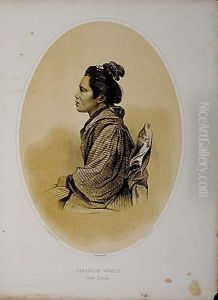Eliphalet M. Ii Brown Paintings
Eliphalet M. Brown Jr. was a 19th-century American artist known primarily for his work as a lithographer and daguerreotypist. Born in 1816, Brown grew up in a period of significant change and innovation in the field of visual arts in the United States, which was experiencing the effects of the Industrial Revolution and an expanding interest in documenting the rapidly changing world.
Brown's career as an artist took an important turn when he joined the United States Japan Expedition, also known as the Perry Expedition, in the 1850s. This expedition, led by Commodore Matthew Perry, was a pivotal moment in U.S.-Japan relations, as it aimed to establish trade and diplomatic relations with Japan, which at that time was a reclusive nation.
As the official daguerreotypist and artist for the expedition, Brown was responsible for documenting the journey and the people and places the expedition encountered. His work provided some of the first visual records of Japan available to the Western world. His daguerreotypes and sketches were crucial in creating the lithographs that illustrated the published accounts of the expedition, which included 'Narrative of the Expedition of an American Squadron to the China Seas and Japan' by Francis L. Hawks. Brown's images played a significant role in shaping Western perceptions of Japan during the mid-19th century.
After his return from the Perry Expedition, Brown continued his work as an artist but did not achieve the same level of renown as he did with his expedition work. There is little record of his activities during the latter part of his life, and as such, he remains a relatively obscure figure in the history of American art. Eliphalet M. Brown Jr. passed away in 1886, leaving behind a legacy as a pioneer in the field of visual documentation and as a contributor to the opening of Japan to the West.
